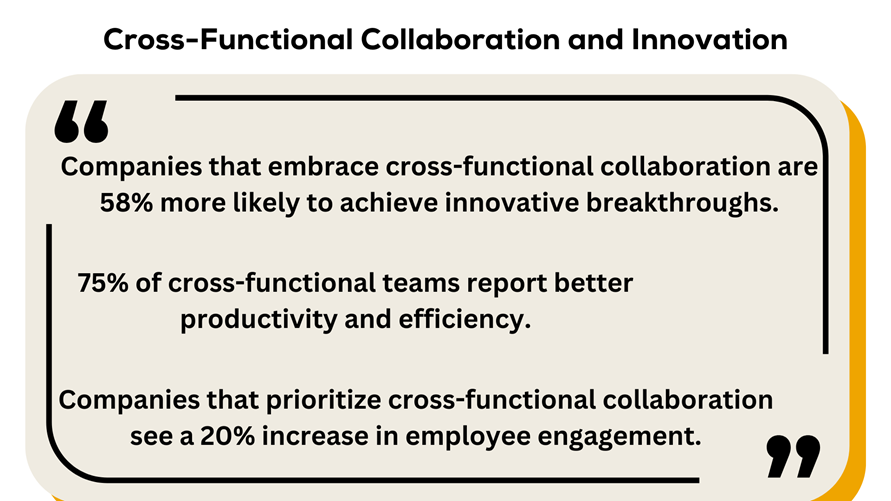GUIDE
8 Tips for Transforming Consumer Insights into Strategic Decisions
Let’s be real – these days, the business world is a total battleground. Companies are going head-to-head, fighting for customers’ attention and loyalty. So how do you gain that crucial edge over the competition? By understanding your customers inside and out. Companies understand what motivates their customers, drives their decisions, and fulfills their wants and needs. Armed with those insights, they can make smart strategic moves that drive growth and success.
This is where these eight tips come into play. Think of them as your secret weapons, your compass for navigating the depths of consumer knowledge. These tips will assist you in cutting through the noise and translating all that data into strategic brilliance, providing a genuine competitive advantage.
If you’re ready to stop guessing about what your customers want and start truly understanding them, then buckle up. With these eight tips in your arsenal, you’ll be prepared to take the lead and leave the competition behind.
Embrace Cross-Functional Collaboration
Consumer insights are not the sole domain of any single department. They are a collective treasure that spans marketing, sales, customer service, product design, and leadership. By fostering cross-functional collaboration, you unlock a goldmine of information that would otherwise remain siloed and underutilized.

- Implement a Unified CRM System: A centralized customer relationship management (CRM) system aggregates insights from various customer touchpoints, providing a holistic view of interactions, experiences, and purchasing behavior.
- Break Down Silos: Encourage teams to share their customer-centric insights freely. Marketing can learn from sales, product design can collaborate with customer service, and leadership can tap into frontline experiences.
One powerful tool for unlocking consumer insights is QuaISights, a platform that provides rich, in-the-moment data and advanced analytics.
Define Clear Goals
Before diving into the depths of consumer data, it’s crucial to define your strategic objectives. Clarity is paramount when it comes to aligning insights with business goals.
- Understand Business Objectives: Are you aiming for revenue growth, customer retention, market expansion, or all of the above? Clearly define your organization’s overarching goals to ensure your insights support them effectively.
- Focus on User-Centric Metrics: While traditional metrics like sales figures and website traffic are important, user-centric metrics like customer satisfaction, Net Promoter Score (NPS), and lifetime value should be your guiding stars. These metrics directly reflect the impact of your strategic decisions on the customer experience.
Leverage the Voice of the Customer (VoC)
The Voice of the Customer (VoC) is not just a buzzword, it’s a lifeline that connects you directly to the heartbeat of your target audience. By actively listening to your customers, you gain invaluable insights that can predict market shifts and drive innovation.
- Establish Continuous Feedback Loops: Implement mechanisms for gathering real-time feedback, such as surveys, social media monitoring, and user testing. These channels provide a constant stream of insights into customer preferences, pain points, and experiences.
- Act on Predictive Power: When customers express desires or frustrations, pay attention. Their feedback can predict market shifts before they happen. Take the example of TTI’s case study on mid-range household carpet washers, where acting on customer feedback led to a successful product launch.
By leveraging the customer insights platform to streamline your VoC efforts. You can efficiently collect, analyze, and act on customer feedback, staying ahead of the curve and delivering exceptional experiences.
Data-Driven Decision-Making
Consumer insights companies are not just numbers on a spreadsheet, they are the fuel that powers data-driven decision-making. By integrating insights into your strategic planning process, you ensure that your decisions are grounded in reality, not assumptions.
- Use Metrics as Decision Criteria: When making large-scale strategic decisions, review customer experience (CX) insights and let the metrics guide your choices. These insights serve as a compass, ensuring you’re heading in the right direction.
- Align CX Objectives with Organizational Priorities: Make customer experience a priority across the entire organization. Align your CX goals with broader business objectives, empowering every team member to become an owner of the customer journey.
In today’s competitive landscape, understanding consumer behavior and preferences is crucial for making informed strategic decisions. Utilizing consumer insights software can significantly aid in this endeavor by providing advanced analytics and predictive modeling capabilities.
Continuous Learning and Optimization
Strategic decisions are not one-and-done events, they are part of an iterative process that evolves as you learn and optimize. Embracing a mindset of continuous improvement is key to staying ahead of the curve.
- Embrace A/B Testing: Test your hypotheses rigorously through A/B testing, and optimize based on real-world results. Iteration is the secret sauce that propels companies like Amazon to continually enhance their recommendation engines and customer experiences.
- Behavioral Insights: Go beyond surface-level data and dive deep into understanding how customers interact with your products or services. Behavioral triggers and patterns can reveal valuable consumer insights platform that drive personalized, tailored experiences.
Unleash the Power of Behavioral Segmentation
Demographics alone are no longer enough to truly understand your customers. To unlock the full potential of your consumer insights, you need to embrace behavioral segmentation – the art of understanding customer actions, preferences, and patterns.
- Map User Journeys: Visualize the stages your customers go through, from initial awareness to post-purchase experiences. Identify key touchpoints, pain points, and moments of delight to gain a comprehensive understanding of their journeys.
- Segmentation Models: Implement advanced segmentation techniques like RFM (Recency, Frequency, Monetary) analysis, cohort analysis, and behavioral clustering. These models reveal distinct customer groups with unique needs and preferences, allowing you to tailor your strategies accordingly.
Harness the Power of Sentiment Analysis
In the age of social media and online reviews, customer sentiments are a goldmine of insights waiting to be tapped. By leveraging natural language processing (NLP) tools and sentiment analysis, you can decode the emotions behind customer feedback at scale.
- Assign Sentiment Scores: Use NLP tools to assign sentiment scores (positive, negative, or neutral) to textual data from customer reviews, social media conversations, and support interactions. This allows you to quantify and track customer emotions over time.
- Uncover Themes with Topic Modeling: Go beyond individual sentiments and identify broader themes within customer conversations. Are they excited about your new feature? Frustrated with shipping delays? Topic modeling reveals these insights, enabling you to address pain points proactively.
Embrace Real-Time Insights with AI
In today’s fast-paced world, the ability to access real-time insights is a game-changer. Artificial intelligence (AI) and predictive analytics empower you to forecast customer behavior and stay ahead of the curve.
- Predict Churn with AI Models: Implement AI-powered churn prediction models to identify customers at risk of leaving. With this knowledge, you can take proactive measures to retain valuable customers before it’s too late.
- Personalize with Recommendation Engines: Leverage the power of recommendation engines to personalize offerings based on past customer behavior. Take inspiration from industry leaders like Amazon, whose recommendations drive a significant portion of their revenue.
By incorporating these eight tips into your strategic decision-making process, you’ll be well-equipped to transform raw consumer insights into actionable strategies that drive growth, innovation, and customer satisfaction.
Conclusion
At the end of the day, truly understanding your customers is the key to unlocking a competitive advantage. By tapping into those consumer insights and using them to drive decisions, businesses can innovate in ways that matter, build deep customer loyalty, and set themselves up for sustained growth over the long run.
But it takes a strategic, all-hands-on-deck approach. Having different teams like marketing, product, analytics, you name it – all aligned and collaborating is crucial. That’s how you connect the dots between all the data points and translate insights into action.
And speaking of data, that’s really where the magic happens. Embracing data-driven decision-making by tapping into advanced tools like sentiment analysis to gauge emotions and behavioral segmentation to understand differing motivations. It allows you to create customer experiences that are tailored and exceptional.
The strategies laid out in this guide are a roadmap to getting there. But the time to act is now. Don’t let this window of opportunity pass. Commit to becoming a customer-obsessed organization guided by data and insights. Your customers will feel the difference immediately, and your bottom line will reap the rewards. It’s how you gain that unfair competitive advantage in today’s crowded market. So don’t wait – transform your business and watch it thrive!
Frequently Asked Questions
How do I ensure my insights align with business goals?
Start by defining clear objectives. Understand what success looks like for your organization, whether it’s revenue growth, customer retention, or market expansion. Then, tailor your insights to support those specific goals.
Can I rely solely on customer-facing teams for insights?
No, cross-functional collaboration is essential. While customer-facing teams like sales and support play a crucial role, it’s equally important to leverage insights from marketing, product design, and leadership. A comprehensive view requires input from various perspectives.
How do I measure the impact of consumer insights on strategic decisions?
Look beyond vanity metrics like website traffic or social media likes. Instead, track user-centric KPIs such as Net Promoter Score (NPS), customer satisfaction scores, and retention rates. These metrics directly reflect the impact of your insights-driven decisions on the customer experience.

-

 BUSINESS3 months ago
BUSINESS3 months agoGrow Your Audience with USA Instagram Followers
-

 TECH3 months ago
TECH3 months agoFreedom Forever Solar Reviews Explain How Conversational Intelligence Turns Customer Interactions into Insights
-

 HEALTH3 months ago
HEALTH3 months agoExploring the Best Cannabis Product Options for Every Lifestyle
-

 BUSINESS3 months ago
BUSINESS3 months agoOn the Frontlines of Conservation: The Role of Tracker Academy Graduates in Anti-Poaching